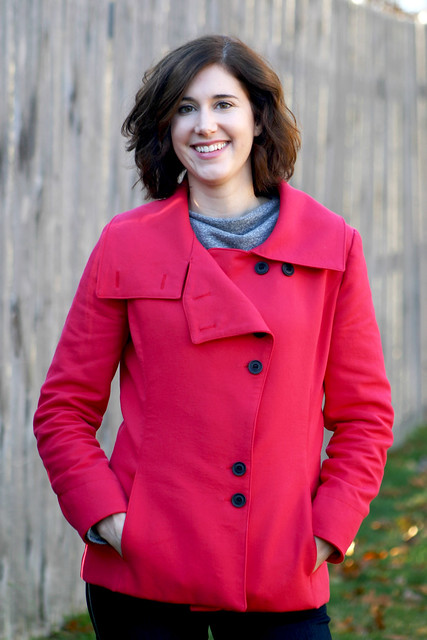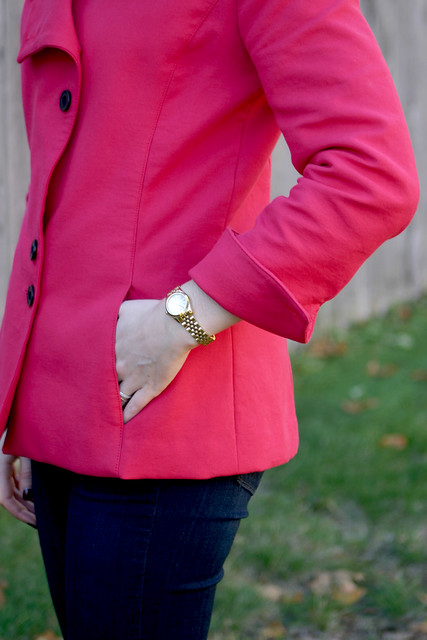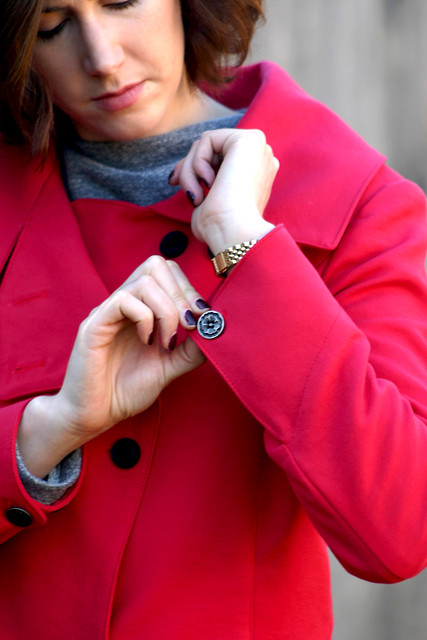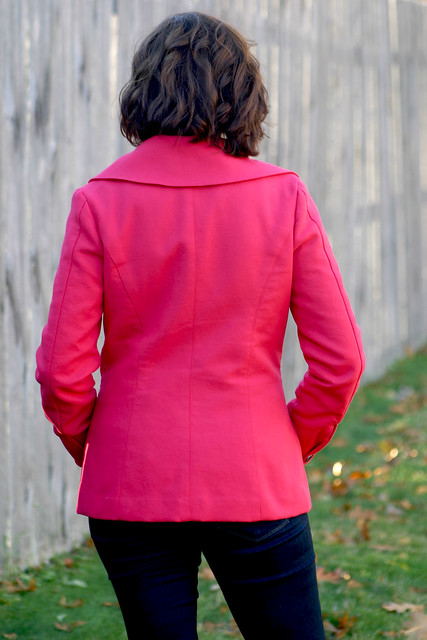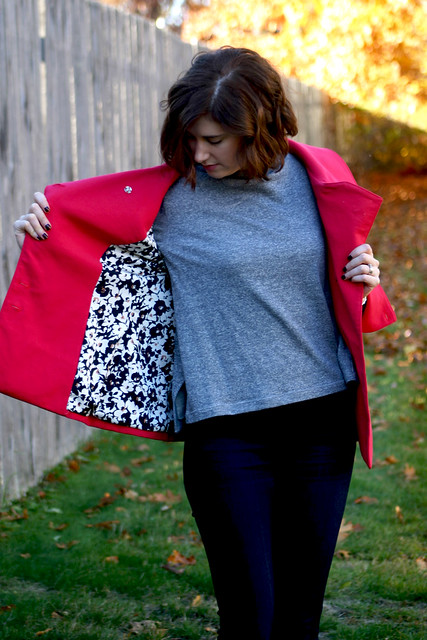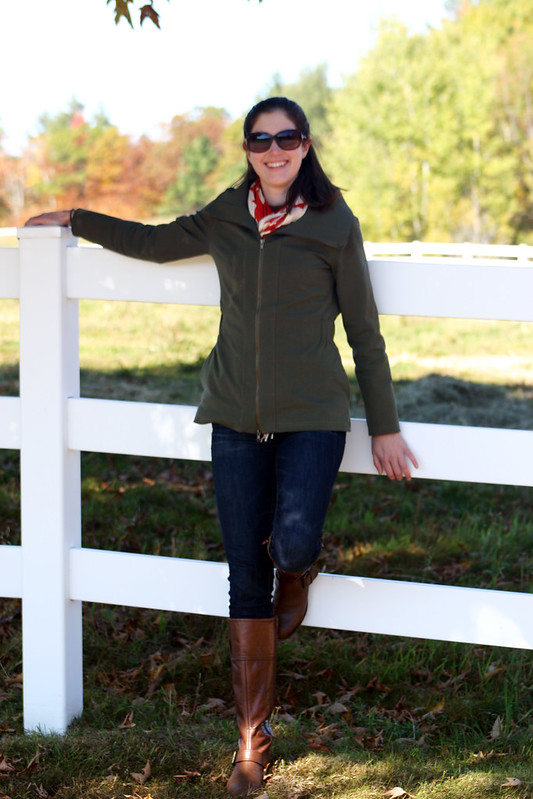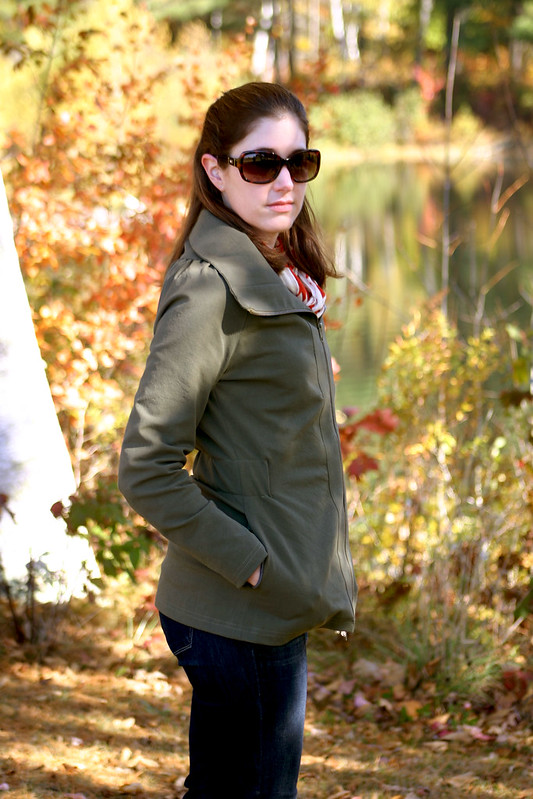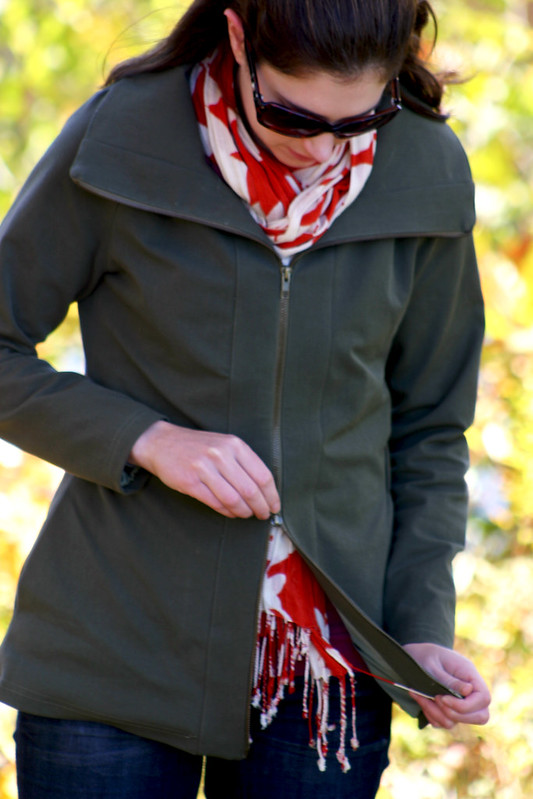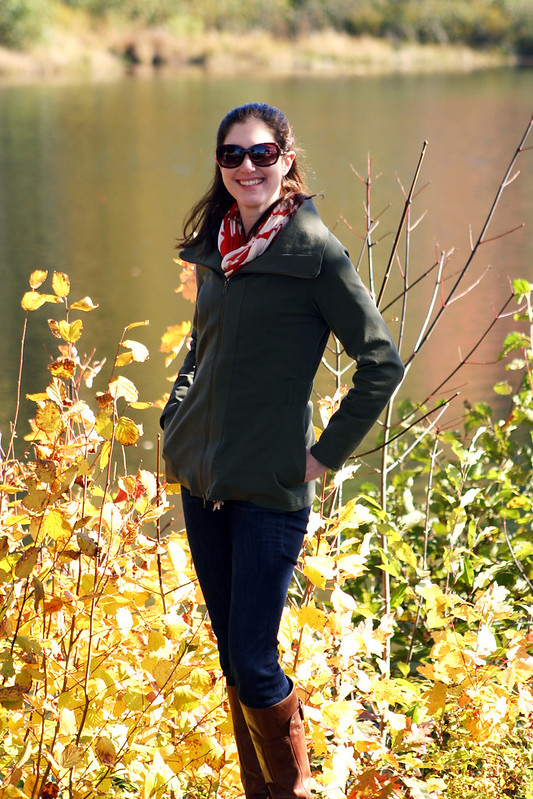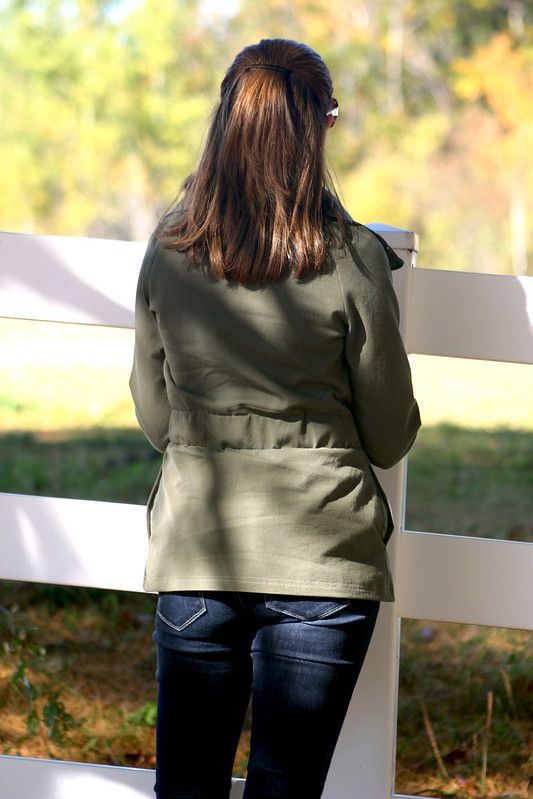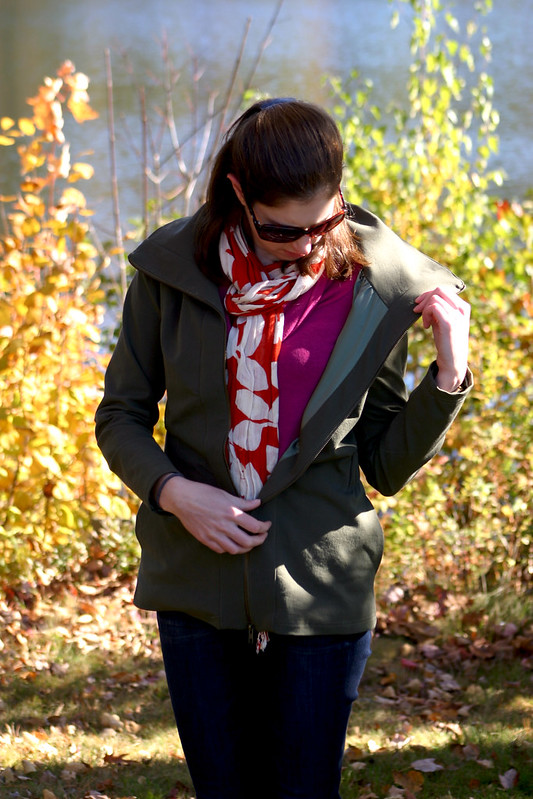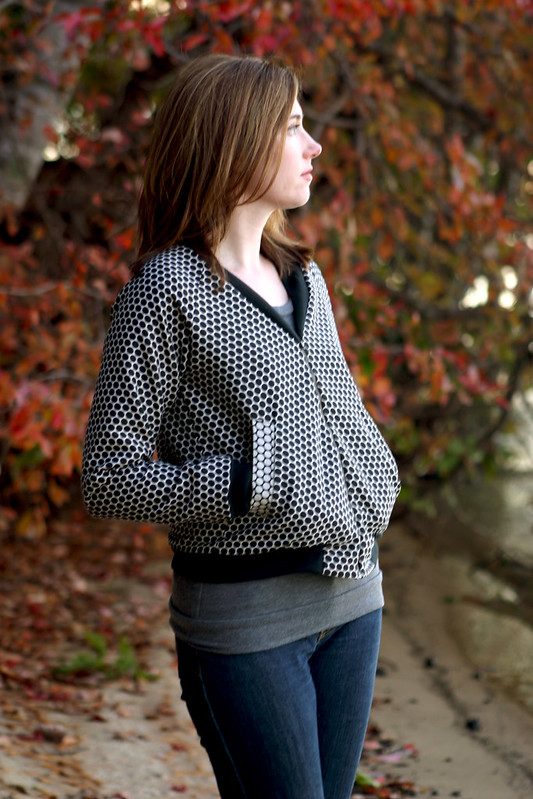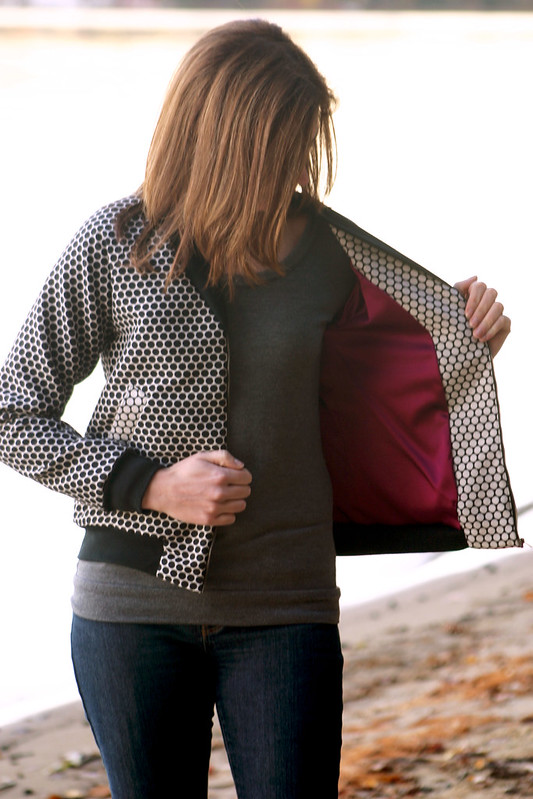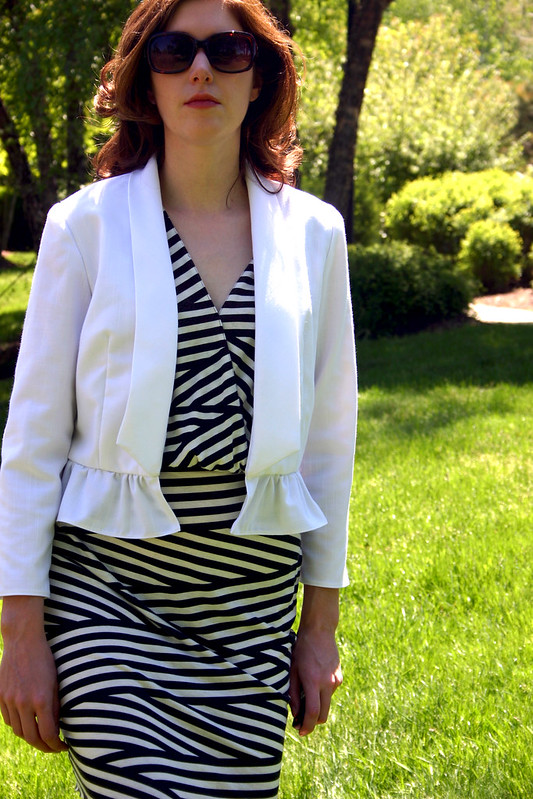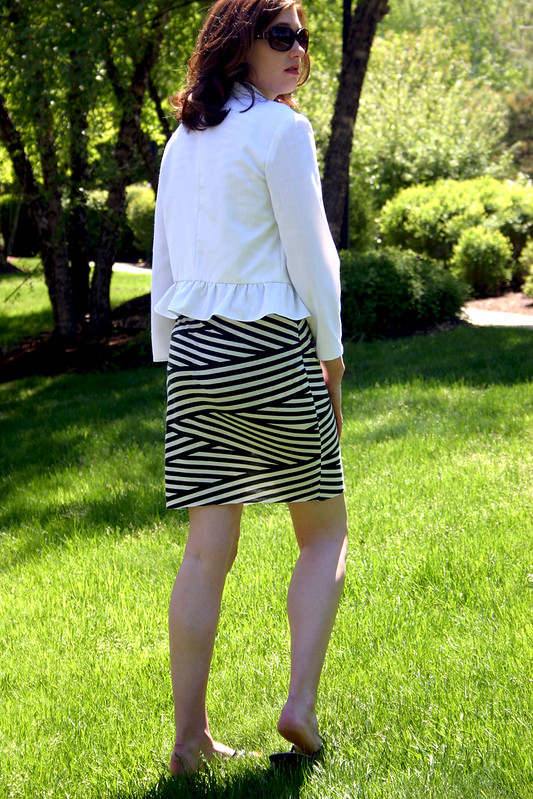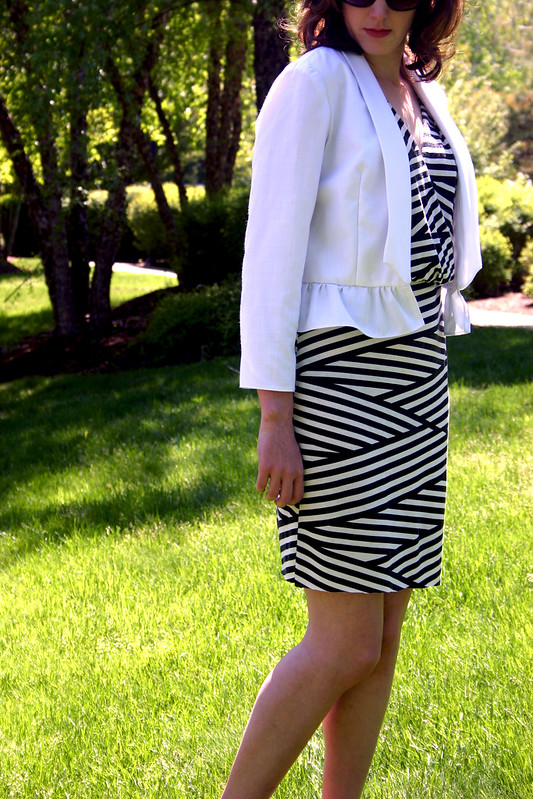

Continuing on my quest to stash-bust and sew through what I already own as much as possible this year, the Hampton Jean Jacket seemed like a perfect pattern to use with some Cone Mills denim I bought last year. Perfect because:
- A) I don’t have a classic jean jacket in my wardrobe, just a white denim jacket from Nordstrom Rack that I wear a lot in the summer with dresses
- B) I have sooooo many denim buttons that I bought by mistake last year and need to use them up, lol
- C) the weight of this denim was better suited for a jacket instead of a pair of jeans and didn’t have the stretch I needed for jeans (I don’t know what I was thinking when I bought it)
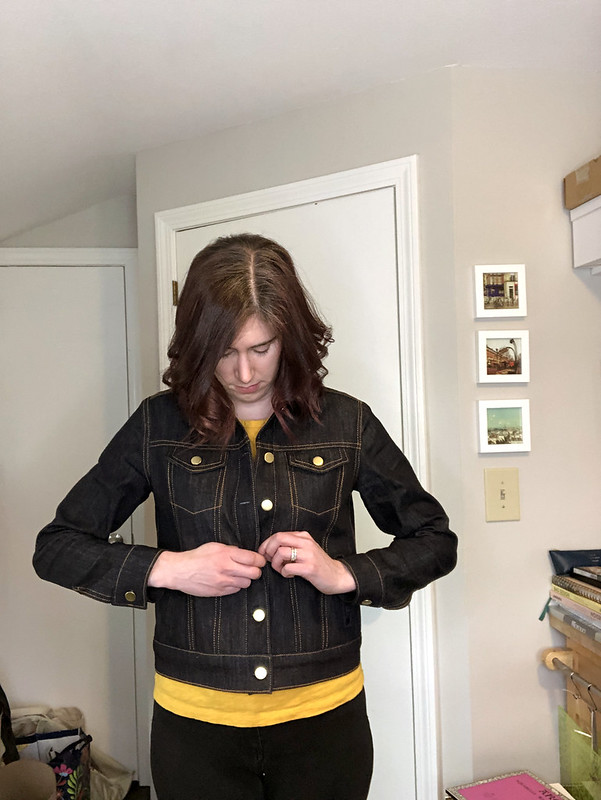
I wanted the cut and fit of this jacket to be similar to the fit of my white denim jacket, so I took some measurements of my white jacket to determine what size to make. Contrary to the picture above, I never button my denim jacket closed and didn’t really care about the ability to wear this over a sweater or bulky layers, so I cut out a size 2 even though my measurements would have put me between a 4 or a 6. I’m glad I cut the 2, and hey, I can still button it closed! I also shortened the body of the jacket by 1″.

The construction is really straightforward and not complicated at all, the time-consuming parts of making this jacket were cutting out all of the pattern pieces (16 total!) and switching thread to complete all of the topstitching. I tried to batch as much topstitching together as I could so I wasn’t changing my thread all of the time, but it’s a step that really elevates the look of the garment and was time well-spent. I used a heavy-weight denim topstitching thread from Tailor Taylor in topaz for most of the topstitching and a lighter weight thread from Wawak in navy for the buttonholes and topstitching around the welt pockets.
The only tricky part with topstitching was the seam down the arm of the sleeve – I couldn’t figure out how to accomplish this since the sleeve at this point was no longer flat. The directions have you topstitch from the wrong side, but that would mean that I would need to have the topstitching thread in my bobbin and I wasn’t sure if my machine would handle that. So, I opted to skip it entirely.
And welt pockets…man, those scare me every time. I’ve put them in jackets a handful of times, but I’m always sweating it each time I cut into the body fabric to open up the pocket. But I love that there’s pockets in this jacket! They’re a teensy bit small and can juuuuust barely fit my iPhone 8 inside.

I also opted to not include the back tabs – I didn’t like how they turned out (couldn’t get the points to look right) and didn’t want to fuss with adding them to the back. The photo above makes it look like the back doesn’t fit well, but it’s just because I’m pulling the jacket in closely with my hands in my pockets.

My stitching isn’t 100% perfect on this. I messed up two of the buttonholes with my automatic buttonhole feature on my Bernina (even when using my compensation plate to make it easier to sew over the bulky seams), I accidentally topstitched part of the cuff with a very small stitch length (2.5 instead of 3.5, yikes), and something weird happened with my sleeve plackets. I need to go back and relook at them and see if there’s something I can adjust, but it looks like one side of the placket is longer than the other. I have no idea how/why this happened…I had no issues with the sleeve seams lining up and everything seemed to be the same length. You can see in some of the above photos that it balloons out a bit and doesn’t lie flat. Sigh…will need to see what I can do with this, maybe adjusting the bartack will help.


I love this jacket! Originally I was hesitant on using the topaz topstitching and the brass buttons because I thought it was going to be a lot louder/flashier than I wanted, but the finish result is perfect to me. It’s not a hard garment to make, just a bit time consuming with all of the stitching details, but it’s one of those garments that has a “wow” factor when you tell people you made it. The classic styling and fit is great – I would definitely make another one of these once I wear out my white one!
Pattern: Hampton Jean Jacket by Alina Design Co.
Fabric:Cone Mills Denim from Threadbare Fabrics
Buttons: Tailor Taylor
Topstitching Thread: Tailor Taylor and Wawak
